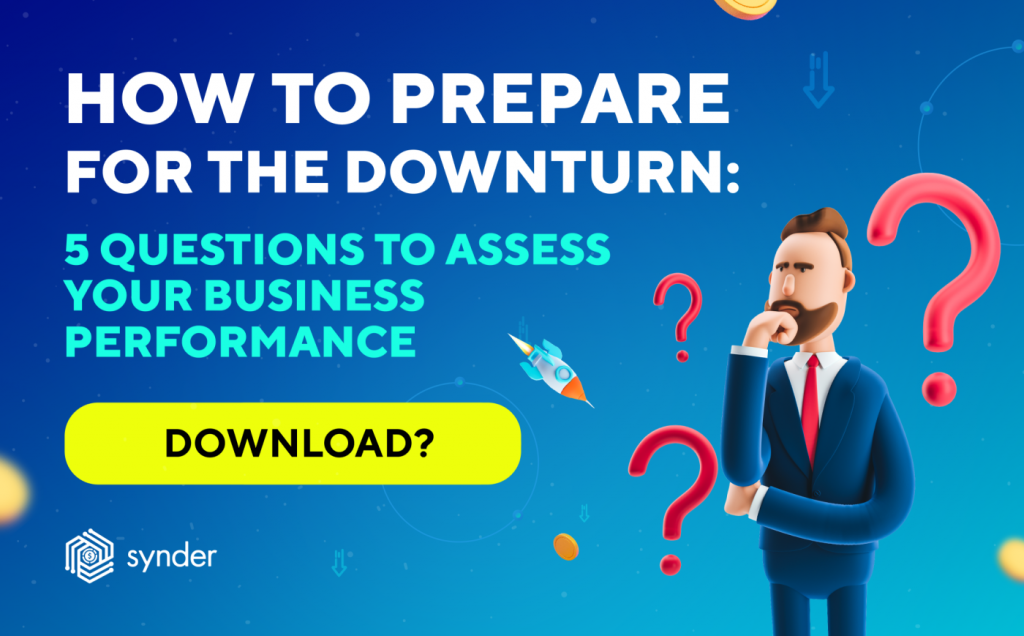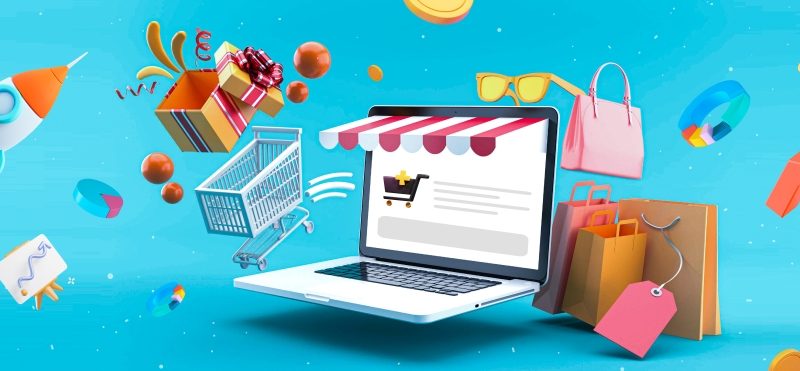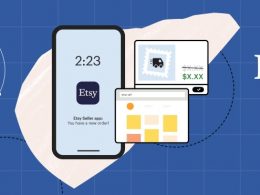The COVID-19 pandemic dramatically influenced the eCommerce industry, driving rapid growth as more consumers entered the digital marketplace. Thanks to its growing landscape, the eCommerce space offers business owners and entrepreneurs the opportunity to create sustainable business strategies and expand at scale. That scale requires an understanding of the current landscape while balancing ongoing pandemic risks.
Of course, the eCommerce industry’s rapid growth also means the market has become increasingly competitive. To stay ahead of your competition and win prospects over, you need to leverage both strategic and creative strategies. Let’s take a closer look at where the industry stands today, and how to establish your brand in the expanding space.
Contents:
1. The current state of eCommerce
2. Why affordable scale is needed
3. Tips for sustainably growing your eCommerce business

The current state of eCommerce
As more buyers move online, marketers must keep up with evolving consumer trends and monitor consumer behavior to create a sustainable revenue stream. Consumers are hunting for information in different ways, and brands have to expand their marketing efforts to the right channel to increase customer acquisitions.
Staying up-to-date with the latest eCommerce statistics helps brands meet consumer expectations and keep their marketing efforts relevant. Here are some stats that reveal the current state of the industry from a comprehensive report and review by Kantar and Catalyst.
66% of consumers select a retailer due to convenience
This statistic reveals that the majority of consumers prioritize convenience over factors such as price or value. To keep up with consumer expectations, brands have to expand their cross-platform marketing efforts.
While most consumers’ buying decisions are influenced by social media platforms, search engines and product sites like Amazon or Walmart also play a key role in their purchasing choices. Therefore, eCommerce brands should expand their cross-channel marketing to increase visibility and ensure customers can reach them with ease.
59% of digital consumers are familiar with social commerce
Social commerce has also gained momentum following the COVID-19 pandemic, with more consumers becoming aware of social media purchasing opportunities. Social shoppers are especially interested in shopping on social media platforms because of the options to buy unique products. In this manner, eCommerce business owners can leverage Instagram Shops (which now come with Shopify integration), Facebook Shops, Facebook’s Marketplace, and similar social commerce features, to drive sales through social channels.
Facebook is used for digital marketing by 72% of eCommerce professionals
Although platforms like Instagram and TikTok have gained increasing popularity among marketers, Facebook remains one of the most preferred channels for digital marketing activities. While establishing your brand’s social media marketing efforts, Facebook is one platform to consider seriously.
Why affordable scale is needed
Affordable scale fuels brand growth without driving your overhead costs through the roof, and it’s vital to grow a sustainable business. If you fail to scale affordably, your revenue stream is at risk of inconsistency, and your bottom line might suffer in the long run.
Not only that, but affordable scaling can put more money in your pocket for other, more important business functions, including preventing fraud. The statistics on online fraud show that this practice is on the rise, and you’ll need more funds to prevent data breaches.
Affordable scaling practices help businesses improve their efficiency without significantly increasing operational costs, encouraging sustainable brand growth. Here are some reasons why affordable growth is needed more than ever.
Ad costs are getting really high
Digital advertising costs are rising across multiple channels, including Google, Facebook, Instagram, Twitter, and even Pinterest. Several years ago, Facebook advertising was something of a goldmine—brands in various niches could enjoy significant ROI thanks to the social platform.
However, while digital advertising is still relevant, increasing advertising costs bring its sustainability into question. While it’s still worth investing in advertising to achieve certain goals, it’s unwise to direct the majority of your marketing efforts into it continually.
For example, digital advertising may still be perfect for bringing in new leads for your brand. But is it still the best option for your post-purchase selling efforts? As ad costs increase, marketers need to monitor their returns continually and decide how much ad spend is justified in these new times.
More competition than ever in the eCommerce industry
Considering how fast the eCommerce industry is expanding, it should come as no surprise that competition in the sector has also skyrocketed. It’s hard to find niches with ‘little’ competition anymore. But what does this competition mean for your marketing efforts?
Well, take a look at digital advertising, for example. Advertising networks like Google and Facebook run on an auctioning model. So as the competition in your space increases, you have to invest more to outbid competitors and keep your ads in front of your audiences.
Increased competition also means that your target audience has more options to choose from, so having a solid customer retention strategy is vital. Maintaining customer loyalty is different from conventional marketing efforts – it’s a longer game, and requires direct, consistent interactions with your customers.
Established brick and mortar retailers are embracing eCommerce
Competition in the eCommerce space is increasing rapidly not only due to new ventures but because established brick and mortar brands are expanding into the digital marketplace. These brands have built a name for themselves as authority figures, and have large followings of loyal customers that trust their reputation.
Competing with established brick-and-mortar retailers is difficult, as their name alone inspires consumer trust. Moreover, established brands have enormous marketing budgets, which translates to high digital ad spends.
Small and medium-sized eCommerce stores struggle to compete with these businesses in more ways than one. If you’re consistently out auctioned by ad spend, then it’s challenging just to get your products in front of your target audience, so you need to invest in increasing visibility alongside optimizing your conversion strategy.
Fast shipping speeds are expensive
While eCommerce giants like Amazon can effortlessly offer 2-day and overnight delivery options, it’s a different story for small and medium-sized brands. If your customer base is diverse and located in different regions, offering fast shipping speeds may not be feasible at all. However, you can use flexible route planners to ease the process and have better time management and planning.
Logistics costs aren’t cheap, with last-mile delivery costs hitting new highs and may continue to rise throughout 2022. So unless you’re selling big-ticket items or your customers are racking up big carts, offering fast shipping speeds can invite significant losses.
Aside from the cost concerns, providing fast shipping from a practical point of view is challenging too. Fulfilling orders requires time and significant human labor, and as your brand grows, keeping up with the demand becomes increasingly challenging.
Tips for sustainably growing your eCommerce business
While modern eCommerce businesses face many challenges and a great deal of competition, don’t forget that the industry still offers great potential. You need to strategize and find creative solutions to common challenges, but by employing the best sustainable practices, you can grow your brand sustainably.
Only offer expedited shipping to customers above a certain price threshold
Expedited shipping is a costly venture, so keep it in reserve for customers that invest more in your brand. After running the numbers, you can set a price threshold for customers to unlock expedited shipping options, based on a price point that doesn’t hurt your bottom line.
While customers hate ‘paying’ more for shipping costs, keeping expedited options behind a price threshold doesn’t technically increase how much customers pay for shipping. Instead, they have to increase their order value, which means they’re still paying for just the products (from their perspective).
Keeping expedited shipping behind a threshold doesn’t just protect your bottom line, but also encourages customers to spend more.
Create a referral program with valuable rewards at higher tiers
Brands that offer referral programs benefit from an 81% increased likelihood of consumer engagement and referred customers boast a 37% increased retention rate (source: extole). These statistics highlight the revenue potential that referral programs offer and showcase how they foster customer loyalty.
Referral programs encourage customers to market your brand for you and offer the added benefit of providing your brand with more loyal customers. Referred customers have a lifetime value that’s 16% more than non-referred ones, and they’re also 4x more likely to buy from you. So, setting up a referral program example can drive revenue in more ways than one.
By offering valuable rewards at higher tiers, brands can significantly motivate customers to continue their referral efforts and increase customer acquisition.
Make use of personalization tools, so every customer gets a unique shopping experience
Providing customers with unique shopping experiences is vital to increasing conversions, boosting customer retention, and outclassing your competition. Modern consumers are 45% more likely to buy from eCommerce brands that offer personalized buying experiences, so it’s important to deliver.
With the rapid advancement of technology, eCommerce professionals can take their pick from personalization tools to improve customers’ buying experiences. For example, you can leverage SMS and email marketing platforms to send personalized marketing messages, and use segmentation to provide customers with recommendations tailored to their buying interests.
Work with a 3PL to offer 2-day or overnight shipping
Earlier, we discussed how pulling off expedited shipping is both costly and possibly impractical. Fortunately, partnering with an experienced third-party logistics provider makes it feasible for eCommerce brands of all sizes to provide customers with 2-day or overnight shipping.
Established 3PLs provide eCommerce merchants with various options to decrease shipping times and costs. 3PLs have multiple fulfillment centers, so you can distribute your inventory to reduce shipping times.
Moreover, a 3PL takes care of the order fulfillment process for you, including picking, packing, and delivering each order. You don’t need to invest time or your own labor force to fulfill orders. Also, as your brand grows and the volume of orders increases, 3PLs can continue to meet the demand and deliver orders on time.
Leverage TikTok (if applicable)
TikTok is becoming the go-to platform for many eCommerce brands to connect with their audiences in a novel way. If your target audience is using TikTok, then it might be time to establish yourself on the platform and up your social media marketing game.
TikTok’s AI-driven algorithm picks up valuable content that your audience engages with, and increases its visibility. The platform offers great potential to grow your brand’s visibility, but to succeed, you need to create high-quality content.
TikTok is a video-based platform, so brands need to design creative clips to engage their audiences. While entertaining content can encourage user interaction, don’t overlook the importance of creative product videos for increasing conversions.
Work with influencers on an affiliate basis (and not sponsored posts)
Statista revealed the modern influencer marketing industry’s value to be around $14 billion last year, highlighting the market’s immense importance to modern eCommerce brands. Influencers enjoy personal, trusting relationships with their followers, and so their product endorsements encourage conversions and help brands increase consumer trust.
However, if you’re looking to work with influencers, you can benefit more from an affiliate relationshi than sponsored posts. The performance of sponsored posts is more difficult to track, and the effects aren’t as long-lasting. Moreover, since sponsored deals often include a flat fee, influencers themselves are less invested in the venture’s success.
Working with influencers on an affiliate basis can drive consistent revenue to your store and also encourages the marketers to invest their efforts in promoting your brand. Affiliate sales directly benefit influencers by increasing their commission, and incentivise them to drive your sales.
Conclusion
The eCommerce space has grown tremendously over the past couple of years, and with its expansion, competition in the sector has increased too. However, while cutting through the noise and establishing your eCommerce brand can be challenging, it’s far from impossible.
As your eCommerce brand grows, it’s important to utilize the best sustainability practices and scale affordably. By investing in strategies that provide your brand with lasting value and help grow your customer base, you can generate a consistent stream of revenue and establish a sustainable eCommerce business.






